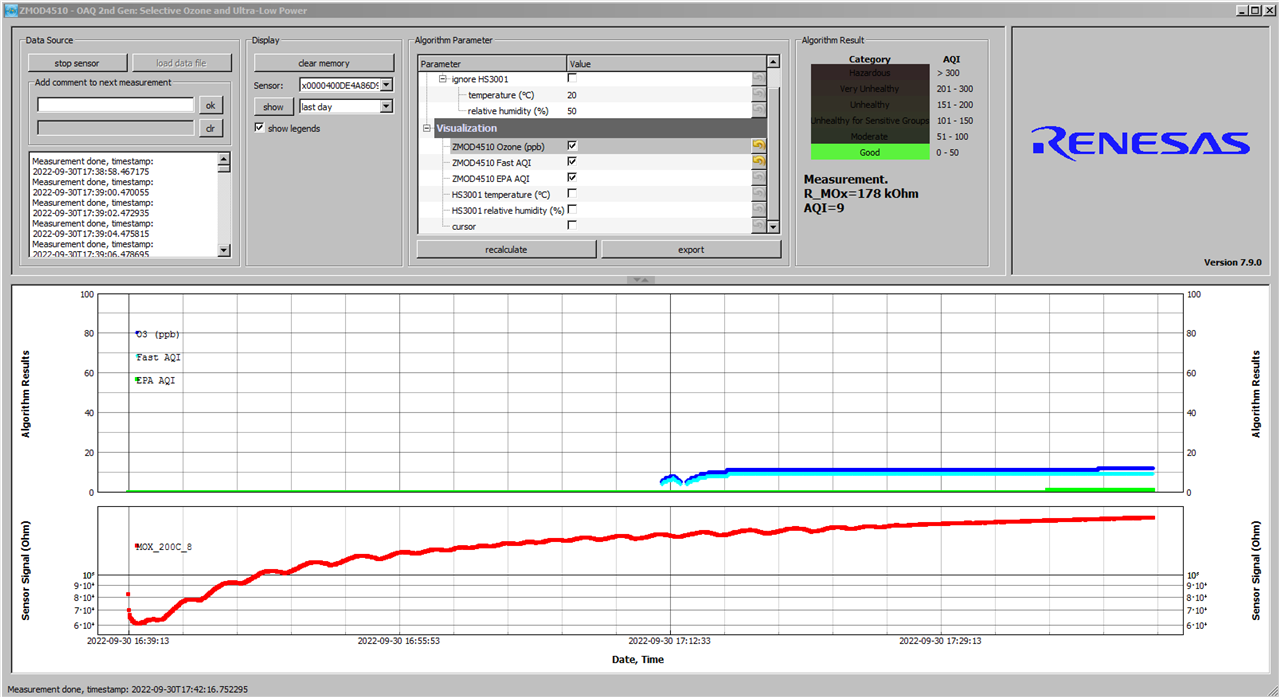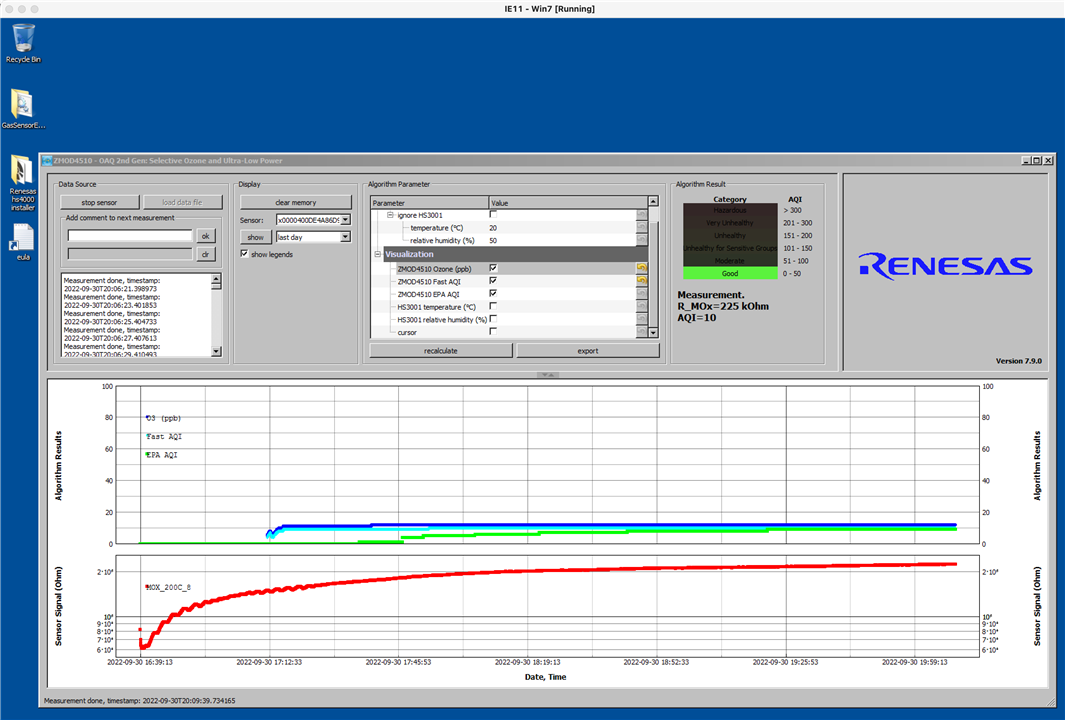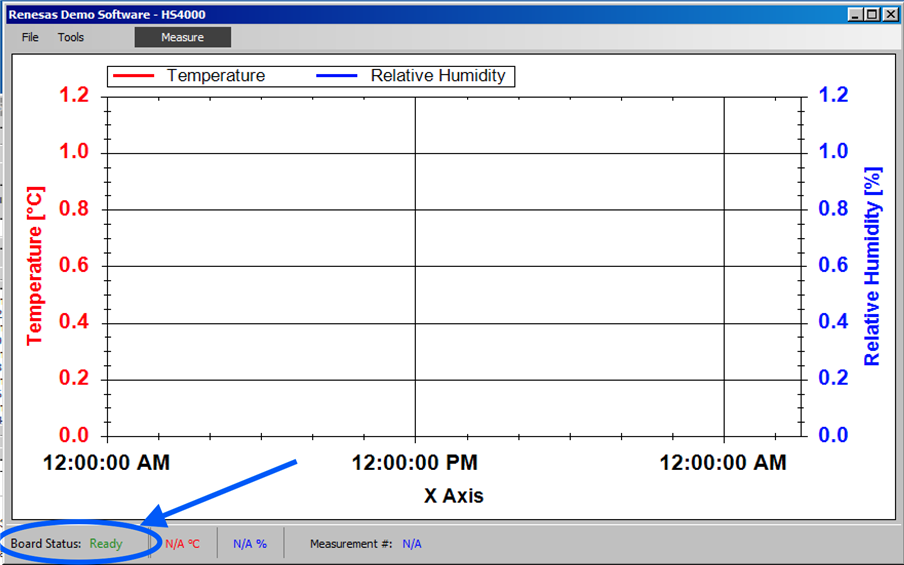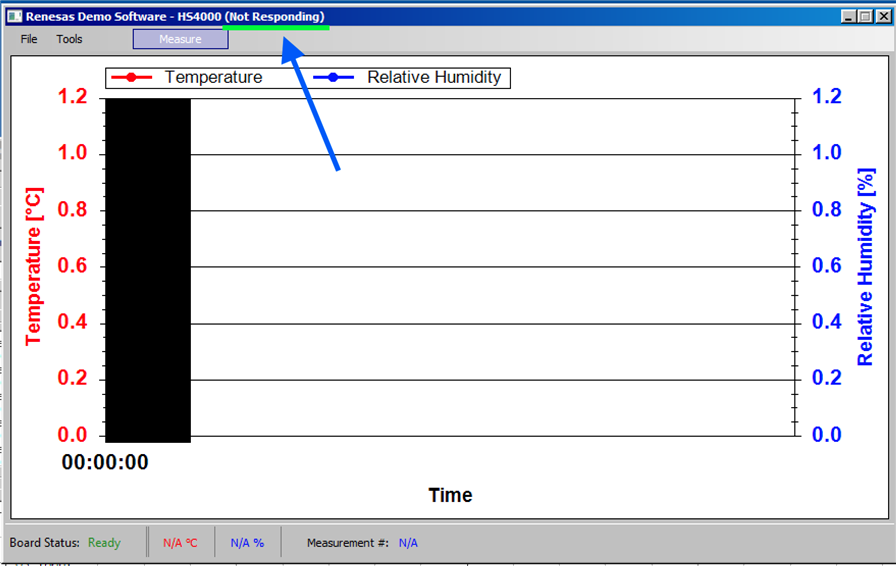The first thing I thought I'd try, after receiving the In The Air Tonigh kit, is to simply follow the instructions in the box and try out the sensors with the software provided by Renesas.
The evaluation kits are designed to run on Windows, so I set up a Windows 7 virtual machine on my Mac Mini using VirtualBox. Microsoft provides pre-made evaluation VMs with a limited 90-day licence which makes this really easy to do - simply import the VM after uncompressing the downloaded file. They even recommend keeping a snapshot of the VM so you can reset the licence when needed.
As far as the software is concerned, the VM behaves just like a real Windows machine, but you do have to remember to select the USB hardware in the VM "Devices" menu when you plug something in, otherwise the USB device will belong to the host machine and the VM won't be able to see it.
The sensor comes with a very long USB cable, but unfortunately it still won't reach the garage from my office
Here it is on my desk, taking air quality readings in my home office:
The ZMOD4510-EVK for Outdoor Air Quality works perfectly this way. At startup it gives a list of options for the various kinds of sensors Renesas has, but only 2 of them apply to this kit - it appears Renesas provides two versions of the air quality algorithms: gen1 and gen2. Gen1 seems to need an hour of sampling before it starts to show anything meaningful, so I re-started the software and chose Gen2 for quicker results I'm impatient that way haha.
While I was writing this blog post the software was happily recording data. It appears to need some time to "stabilize" the AQI index, so I let it run while I did a few other things around the house.

Side note: the first few times I tried this software I was using a Windows10 VM that I had set up last year for a different project. It appeared to work fine, except that every time I came back to my Mac the machine had shut itself down. At first I thought it was due to power saving settings, and part of it was, but a bit of further research suggests that it might have been due to it being an expired evaluation licence. At this point I grabbed a new fresh Windows 7 VM from Microsoft, updated the power settings, and it has been working reliably ever since.
I also tried running it on my older Windows XP VM (for which I do have a proper license), but the installer won't run - it appears to need a library fuction that only exists in newer versions of the OS. The documentation says Windows XP is supported, but that doesn't appear to be the case.
This is where I wish I had a separate little Windows computer just for projects like this. But I rarely have projects that require Windows, so it seems like a bit of a waste. I'm wondering if a Raspberry Pi could run this software hmm :/ If I can make that happen, it would allow me to run it in the garage to start gathering data. However, it looks like Renesas provides code for the Arduino IDE, so I should be able to gather data using either my ESP-32 board or my Arduino MKR WiFi 1010.
I do wish tech companies would provide better support for MacOS for their applications and development tools. Support for Android and iOS tablets and phones would be even better, considering that nearly everyone owns one of those now.
In general everything with the ZMOD4510-EVK appears to be working nicely - the UI is showing some pretty graph data and the data.csv file contains a lot of detailed measurements. At this point I'm not sure what it all means, but I'm sure we'll figure that out as the experimenting continues!
This is what the graphs look like after a few hours of logging data:

Unfortunately, the HS4000-EVK for humidity sensing gave me some troubles. It wouldn't install on Windows 10 without first updating settings to enable .NET 2.0 - the link the installer provides points to the latest .NET software, which Windows 10 already has, and there are no instructions on enabling older versions of .NET.
I was able to install it on my Windows 7 machine very easily though.
At this point I was able to start the software, and it detected the sensor properly. However, when I tried to start the measurements, the program just hangs.
Here are some screenshots. In the first picture it does seem to detect the board, and says it's ready. But then after I press the "Measure" button, the application hangs, as shown in the second picture.


The humidity sensor isn't crucial to the experimenting I intend to do, but it would be good to get that figured out so that I can also include that extra data.
I will contact customer support about this, probably next week, to figure out what is happening.
My next step, now that I'm able to gather data, is to gather air quality data in my garage. Unfortunately, my Mac Mini doesn't travel easily, so I need a way to get the sensor into the garage. I actually bought a USB-over-cat5 extender for this purpose, but it didn't work at all. I had hoped to use the cat5 jack in my office to connect down to the garage where the main router is, but I guess that's not going to happen. The other option I had hoped for was to combine the USB-over-cat5 extender with the powerline-ethernet adapters I have, to jump it to anywhere in the house.
Ah well, this just means I need to skip that step and get straight to work on connecting it to a microcontroller.
-Nico


-

DAB
-
Cancel
-
Vote Up
0
Vote Down
-
-
Sign in to reply
-
More
-
Cancel
-

ntewinkel
in reply to DAB
-
Cancel
-
Vote Up
0
Vote Down
-
-
Sign in to reply
-
More
-
Cancel
Comment-

ntewinkel
in reply to DAB
-
Cancel
-
Vote Up
0
Vote Down
-
-
Sign in to reply
-
More
-
Cancel
Children